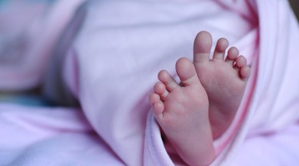New Delhi, Feb 14 (IANS) About 2 lakh babies are born with congenital heart disease in India every year, said experts on International Congenital Heart Disease Day on Wednesday.
Congenital Heart Defects (CHDs) are cardiac anomalies present since birth and cover a wide spectrum from small defects, which may be totally asymptomatic and compatible with a normal lifespan, to more severe forms which require urgent intervention.
“CHDs a structural abnormality present at birth, affects millions worldwide, and India bears a substantial burden. With an estimated 200,000 babies born with CHD annually, it’s the most common birth defect in the country,” Dr. Sanjeeva Kumar Gupta, Consultant, Department of Cardiology at the CK Birla Hospital, Delhi, told IANS.
Common CHDs are Atrial Septal Defect (ASD), Ventricular Septal Defect (VSD), and Patent Ductus Arteriosus (PDA).
“These heart defects cause abnormal blood flow through the heart chambers and lungs ultimately causing varied symptoms depending on the type of defect. Symptoms seen in newborns include rapid breathing, poor feeding, poor weight gain, bluish discoloration of skin and recurrent chest infections,” Dr Deepak Thakur, Consultant Pediatric Cardiology, Paras Health Gurugram, told IANS.
Older children may experience chest pain, shortness of breath, fatigue, headache, inadequate growth as per age peer, bluish discoloration of nails and lips, recurrent chest infections.
“Sometimes children are completely asymptomatic in cases and defects are diagnosed during route cardiac evaluation, this can happen when the defects are of mild or moderate severity where heart and other organs are tolerating defect related abnormal blood flow well at this stage. But as the age progresses the symptoms can worsen as the heart starts getting weak to tolerate the heart defect any further,” Dr Thakur said.
“While definitive trends are difficult to establish due to limited data, concerns regarding a possible rise exist,” Dr Gupta said, citing rising environmental pollution and undiagnosed maternal infections during pregnancy as the major reasons.
Dr. Munesh Tomar, Director, Paediatric Cardiology, Max Super Speciality Hospital, Saket, told IANS that around one in every 100 babies are born with CHD and it accounts for nearly one-third of all major congenital anomalies.
“Family history especially in first-degree relative; increased risk in consanguineous unions; intrauterine infection such as rubella, or drugs and toxins taken by the mother during pregnancy; syndromic association like Down Syndrome, DiGeorge’s syndrome, Williams’ Syndrome, Noonan’s Syndrome and Turner Syndrome and maternal diabetes mellitus” are some risk factors associated with an increased incidence of CHD,” said Dr. Tomar.
Advances made in paediatric cardiology, cardiac surgery and critical care have significantly improved the survival rate of children with CHD and there is a significant decline in morbidity and mortality. Early diagnosis, therefore, is key, said the health experts.
“It’s important for parents to understand that CHDs are treatable conditions. Children with this condition can live long, healthy, and active lives with proper care and timely treatment. More than 95 per cent of CHDs are simple heart defects requiring one time nonsurgical intervention or surgical repair following which a child can lead a completely normal life. There are a variety of treatment options available for children with congenital heart disease,” Dr Thakur told IANS.
“However, for many children, particularly those in rural areas, the lack of awareness about CHD symptoms means the condition goes undetected. Reaching specialised centres, often in distant cities, can be a daunting task, further hampered by the high cost of treatment, often leaving families financially burdened,” added Dr Gupta.
–IANS
rvt/rad


Comments are closed.